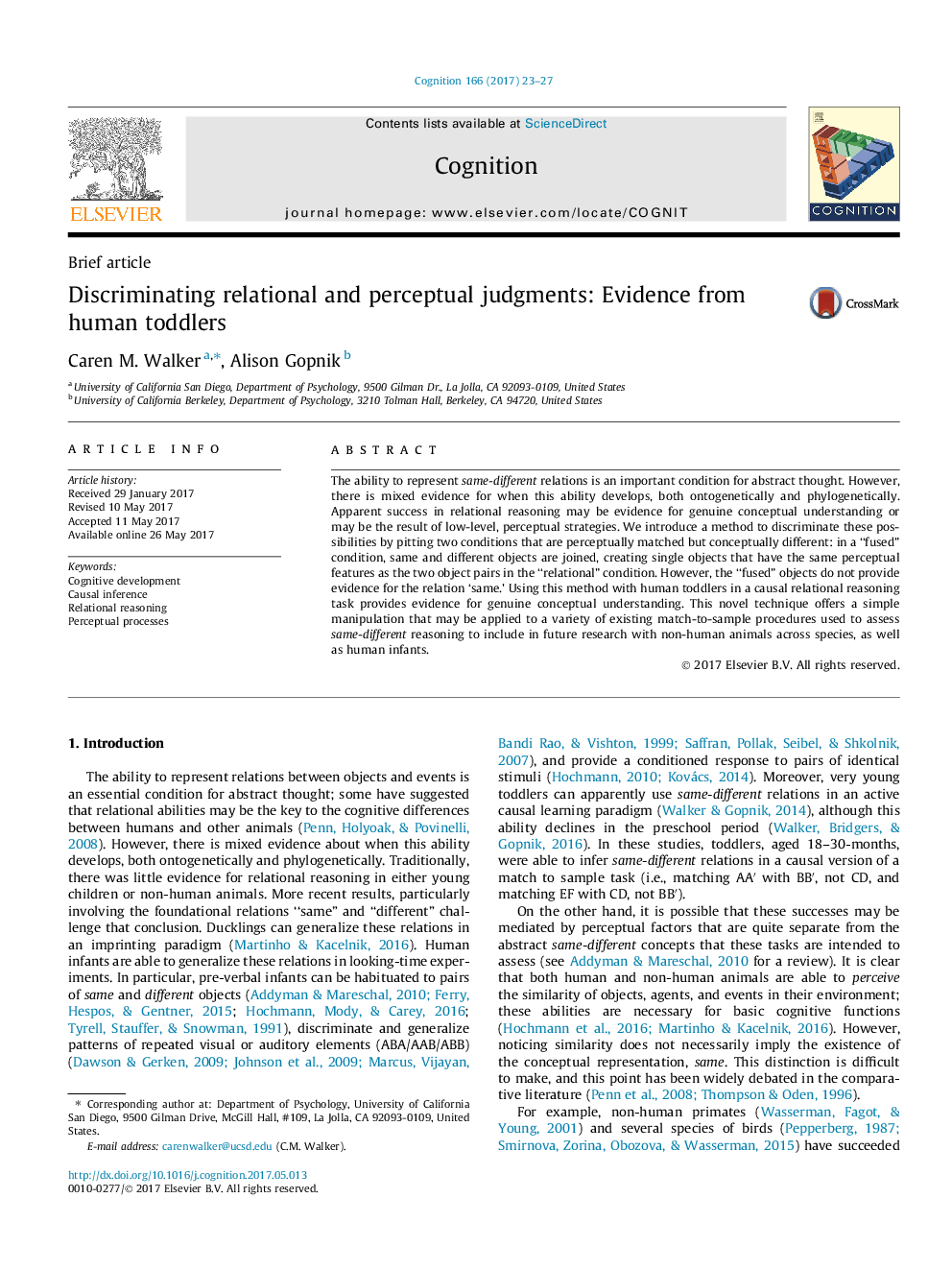| Article ID | Journal | Published Year | Pages | File Type |
|---|---|---|---|---|
| 5041572 | Cognition | 2017 | 5 Pages |
â¢Introduces a method for discriminating perceptual from conceptual relational learning.â¢Toddlers show genuine conceptual understanding of same-different relations.â¢Success is not the result of attention to low-level cues like perceptual variance.â¢This method may be applied to existing match-to-sample procedures across species.
The ability to represent same-different relations is an important condition for abstract thought. However, there is mixed evidence for when this ability develops, both ontogenetically and phylogenetically. Apparent success in relational reasoning may be evidence for genuine conceptual understanding or may be the result of low-level, perceptual strategies. We introduce a method to discriminate these possibilities by pitting two conditions that are perceptually matched but conceptually different: in a “fused” condition, same and different objects are joined, creating single objects that have the same perceptual features as the two object pairs in the “relational” condition. However, the “fused” objects do not provide evidence for the relation 'same.' Using this method with human toddlers in a causal relational reasoning task provides evidence for genuine conceptual understanding. This novel technique offers a simple manipulation that may be applied to a variety of existing match-to-sample procedures used to assess same-different reasoning to include in future research with non-human animals across species, as well as human infants.
